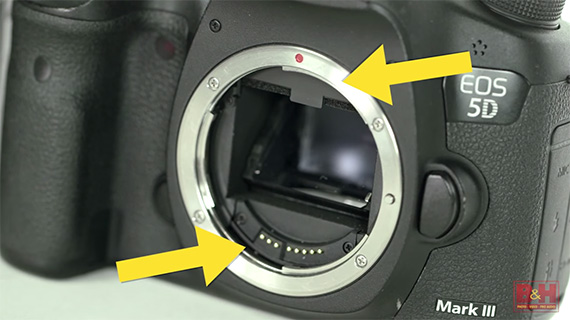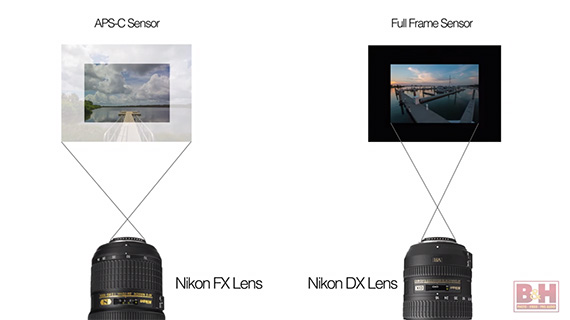There are hundreds of choices when it comes buying lenses for your camera. But you have to be careful so you don’t end up buying something that’s incompatible with the lens mount of your camera. Hopefully, this quick video can help you grasp the fundamentals:
Modern digital cameras come with precisely designed lens mount systems. This allows for the lenses that are designed for a particular system to ‘speak’ to the camera. If your camera is set to a specific aperture the camera is able to transmit that information to the lens when taking a picture, for example.

Canon lens mount system as demonstrated on a 5D Mark III
Normally all lenses that are designed for a full-frame DSLR camera can also be used on smaller crop-sensor cameras. So, Canon’s EF mount lenses (designed for full-frame cameras) will mount effortlessly on the smaller EF-S mount cameras. However, the reverse is not always true. In the above example, a Canon EF-S mount lens won’t mount on a Canon EF camera.

Nikon lens mount systems
Nikon systems, however, are different. An FX format lens (designed for a full-frame Nikon body) will mount without any problems onto a DX camera (crop sensor body). Conversely, a DX lens will mount to a FX body. Having said that, there will be strong vignetting, because the smaller image circle of a DX format lens won’t provide enough light for the larger sensor on a full-frame camera.
Specific to Nikon systems, there are some entry level lenses, like the 50mm f/1.4D, that don’t have a built-in auto-focusing motor. They depend on the built-in focusing motor on the camera body to auto-focus. If your camera doesn’t have a built-in AF motor you’ll be stuck with manually focusing these lenses.

Sony lens mount systems
Sony’s mount systems are slightly different than the big two discussed above. Sony’s DSLT (Single-Lens Translucent) systems use the Alpha lens mount., which is different from the E-mount system that Sony uses for its mirrorless system cameras. Even with the mirrorless systems, there are full-frame and crop sensor cameras. When buying lenses for full-frame mirrorless cameras you’ll need to ensure that the lens has the markings ‘FE’ which indicates that it’s full-frame.
If you’re curious to learn more, the video above goes on to give more details on lens adapters, compatible lenses from third party manufacturers, and cross-compatibility.
Like This Article?
Don't Miss The Next One!
Join over 100,000 photographers of all experience levels who receive our free photography tips and articles to stay current:






Leave a Reply